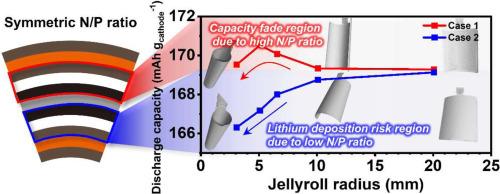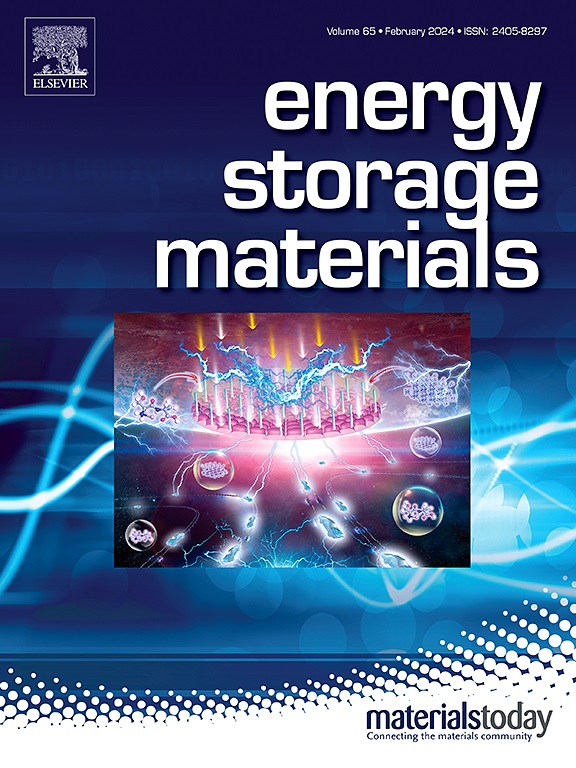Unveiling the impact of electrode curvature on N/P ratio variations in cylindrical lithium-ion batteries
IF 18.9
1区 材料科学
Q1 CHEMISTRY, PHYSICAL
引用次数: 0
Abstract
Cylindrical lithium-ion batteries offer several advantages over their flat-body counterparts, including a more robust structure. However, their inherent electrode curvature restricts both electrochemical performance and stability. This study investigates the impact of electrode curvature on cell behavior by simulating the curvature of cathode/anode layers at specific radial positions within the cylindrical cell to fabricate single-sheet cells with specific curvatures. Our analysis of the custom-fabricated and commercial 21700 cells reveals that electrode curvature varies with radial position, which leads to local variations in the negative-to-positive electrode capacity ratio (N/P ratio). These variations result in local electrochemical performance variations, causing capacity inconsistencies and increasing the risk of lithium-metal deposition. Moreover, using high-nickel cathode materials exacerbates this sensitivity to curvature, making it a crucial design consideration. Unlike flat-sheet batteries, cylindrical batteries require a tailored design approach that optimizes the N/P ratio while accounting for electrode curvature. Our findings provide crucial guidance for enhancing the design and performance of cylindrical batteries by mitigating curvature-related risks, thereby improving their safety and longevity.


求助全文
约1分钟内获得全文
求助全文
来源期刊

Energy Storage Materials
Materials Science-General Materials Science
CiteScore
33.00
自引率
5.90%
发文量
652
审稿时长
27 days
期刊介绍:
Energy Storage Materials is a global interdisciplinary journal dedicated to sharing scientific and technological advancements in materials and devices for advanced energy storage and related energy conversion, such as in metal-O2 batteries. The journal features comprehensive research articles, including full papers and short communications, as well as authoritative feature articles and reviews by leading experts in the field.
Energy Storage Materials covers a wide range of topics, including the synthesis, fabrication, structure, properties, performance, and technological applications of energy storage materials. Additionally, the journal explores strategies, policies, and developments in the field of energy storage materials and devices for sustainable energy.
Published papers are selected based on their scientific and technological significance, their ability to provide valuable new knowledge, and their relevance to the international research community.
 求助内容:
求助内容: 应助结果提醒方式:
应助结果提醒方式:


